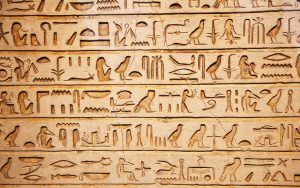Words vs pictures – what makes marketing tick?
Do we buy with our eyes, or respond to the written word? Are we more influenced by enticing images or the power of persuasion? Which is the critical element of a piece of direct marketing – is it the verbal, the headline and the argument, or is it the visual, the font and imagery?

Walk into any busy city market and you’ll be struck by two things. One is the spectacle – the fantastic variety of colours and textures, of fruits, fish, meats and confectionary stacked high wherever you look. For a stall to be well appointed (or ‘flashed up’) it needs to show abundance, variety and quality. The stall keepers pile things up and put their best, most visually appealing stock front and centre!
The other thing you’ll notice is the sound! The market echoes with cries – prices, deals, offers, and urgency: “two for a pound”, “buy one get one free”, “hurry, last chance”, “my best price today”. The astute customer will be able to pick out the distinct key messages from the hubbub of calls, and quickly and easily find their way to the deals of the day…
In direct marketing there are plenty of purely visual ways to engage customers. Colours have a powerful impact – according to some theories yellow is warm, orange friendly, red is exciting, blue is trustworthy, purple is creative, green is peaceful, and black is balanced. Apparently.
How you arrange visual elements can draw people in too. For instance using mathematical arrangements such as the Golden Section can make marketing look proportionally appealing. Fonts and typefaces give design a more or less formal feel, evoke individuality or familiarity… Combining different visual elements skillfully is very compelling and enhances the brand as well as driving the impulse to purchase.
But perhaps it is the words that tie those powerful emotive visual effects to the action you want people to take. Sure, beautiful design is distinctive, engaging and appealing, but unless it is directed to a product and a purchase, it could remain ultimately ineffective.
Imagine a perfume advertisement on TV without the buyline. It’s stylish, full of enigmatic, effusive, emotional images – but does it have a point? With no words, it lacks real persuasion, and ultimately viewers have no true idea of what the ad is for, or, more importantly, how they should to respond to it.
Direct marketing requires highly effective combination of words and images. However impressive words sound, however much wow-factor the design has, each element has to work hard together, with the same clear objectives, to engage the customer and drive action – sales, contact, brand awareness etc.
We do buy with our eyes, but we are also open to persuasion, we look for the detail of the deal, but also need to be reassured by engaging imagery…
Great marketing is always a team effort!
